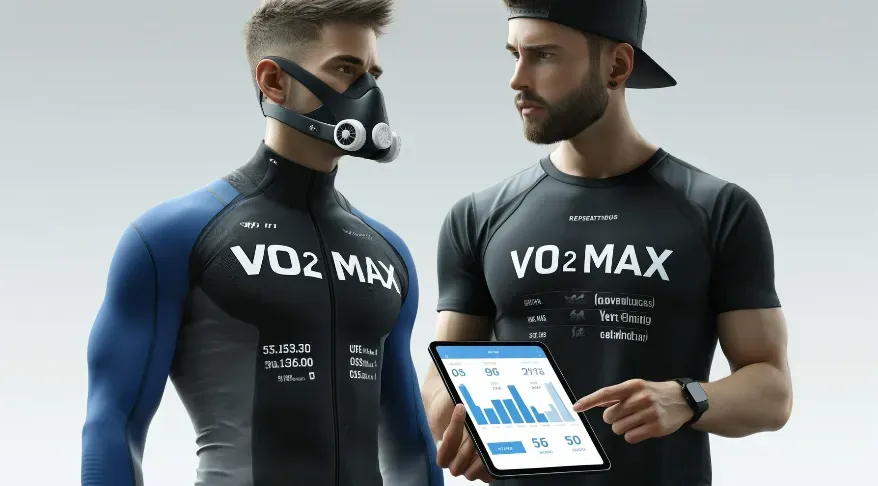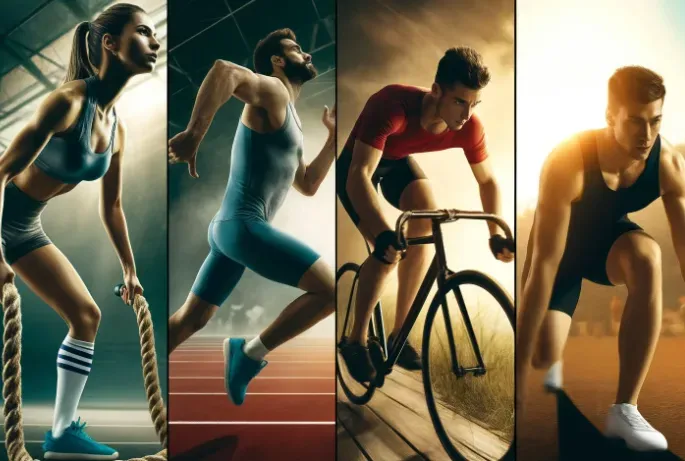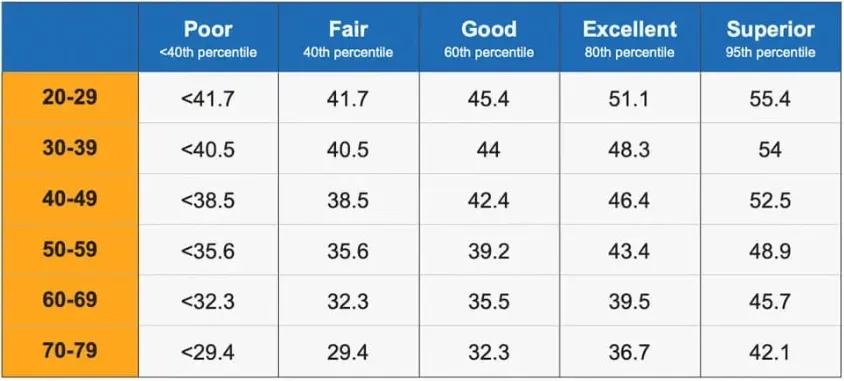How to Maximize Your Endurance with VO2 Max Insights
What is VO2 Max?
Definition and Basic Concept
VO2 Max, a crucial term in endurance training, essentially measures the maximum amount of oxygen your body can utilize during intense exercise. It represents aerobic capacity and is a fundamental indicator of cardiovascular fitness. Think of it as the horsepower of your engine—the more oxygen you can process, the better you can perform endurance activities.
The concept of VO2 Max has its roots in the 1920s, thanks to pioneering research by A.V. Hill. His experiments revealed that there is a limit to how much oxygen one can use, even when exerting maximum effort. This plateau, where oxygen consumption no longer increases despite increased workload, underscores the body's aerobic limitations and highlights the importance of this metric for athletes and fitness enthusiasts alike.
VO2 Max is not just a number; it reflects the intricate dance between your respiratory system, cardiovascular system, and muscles. When you push your body to its limits, how efficiently these systems can work together to process and use oxygen will determine your VO2 Max. This makes it a valuable tool for assessing not just current fitness levels, but also the potential for improvement with targeted training.
Absolute VO2 Max vs. Relative VO2 Max
When discussing VO2 Max, it's essential to distinguish between absolute and relative measurements. Absolute VO2 Max is expressed in liters per minute (L/min) and does not account for body size. This measurement is useful for comparing the cardiovascular capacity of individuals of similar size or for assessing one's progress over time.
Relative VO2 Max, on the other hand, is measured in milliliters of oxygen per kilogram of body weight per minute (ml/kg/min). This normalization allows for comparisons between individuals of different sizes, providing a more accurate reflection of an athlete's efficiency. For example, a larger rower might have a higher absolute VO2 Max but, when adjusted for body weight, might be on par or lower than a smaller, more efficient runner.
Understanding these two perspectives helps in creating a comprehensive profile of an athlete's capabilities. Absolute VO2 Max provides insights into overall cardiovascular power, while relative VO2 Max offers a clearer picture of efficiency and effectiveness. This dual approach is especially useful for tailoring individualized training programs and setting realistic, achievable goals.
Measuring VO2 Max
I need 5 (five) more ideas for images to use in the article that would reflect and represent the themes and concepts conveyed in the article you wrote above. Give me the image prompts that I would use for ChatGPT-4 that would appropriately produce those images. Include the style for the images in the prompt as well.
Standard Methods of Measurement
VO2 Max is typically measured using graded exercise tests (GXT), which can be performed in a laboratory or a controlled field setting. Laboratory Testing often involves using a treadmill or a stationary bike, where the subject's oxygen intake and carbon dioxide output are analyzed via a mask connected to a metabolic cart. This method is highly accurate and provides real-time data, ensuring precise measurements.
Field Testing can also be conducted using equipment like portable metabolic analyzers or through specific performance tests, such as the Cooper test or the beep test. While field tests might not be as precise as laboratory tests, they are more accessible and can still offer valuable insights into an individual's aerobic capacity.
Advantages of Laboratory Testing:
- Highly accurate and reliable
- Controlled environment minimizes external variables
- Real-time data allows for immediate adjustments
Advantages of Field Testing:
- More accessible and less expensive
- Reflects real-world conditions and performance
- Easier to repeat for ongoing assessments
Both methods have their place in assessing VO2 Max. The choice between laboratory and field testing often comes down to the available resources, the level of precision required, and the specific goals of the assessment.
Normalization by Body Weight
To account for differences in body size and composition, VO2 Max is often expressed relative to body weight. Liters per Minute vs. Milliliters per Minute per Kilogram: Absolute values in liters per minute are normalized to milliliters per kilogram of body weight per minute to compare across different individuals. This method provides a clearer picture of an athlete's efficiency and endurance potential.
For a more accurate comparison, some researchers suggest normalizing VO2 Max by lean body mass rather than total body weight, as this focuses on the metabolically active tissues. This approach can eliminate discrepancies caused by non-active tissues, like adipose tissue, and provide a better understanding of an individual's true aerobic capacity.
Reasons for Normalizing VO2 Max:
- Enables fair comparison between athletes of different sizes
- Highlights efficiency and potential for improvement
- More accurately reflects an individual’s aerobic capacity
This normalization process is vital for athletes and coaches who aim to fine-tune training programs. By understanding how an athlete's VO2 Max compares to others in a meaningful way, more precise and effective training regimens can be developed.
Importance of VO2 Max in Endurance Sports
VO2 Max as an Indicator of Aerobic Capacity
VO2 Max serves as a fundamental indicator of an athlete's aerobic capacity, which is critical for endurance sports. It measures how effectively your body can utilize oxygen during prolonged physical activity. A higher VO2 Max typically correlates with better endurance and performance, as it indicates a well-developed cardiovascular system capable of sustaining high-intensity efforts for extended periods.
However, while VO2 Max is a valuable metric, it is not the sole determinant of performance. Other factors, such as running economy, lactate threshold, and mental toughness, also play significant roles. Therefore, while a high VO2 Max can enhance performance, it must be coupled with other physiological and psychological attributes to achieve peak endurance.
VO2 Max also provides a benchmark for assessing the effectiveness of training programs. By regularly measuring this metric, athletes and coaches can track improvements, identify plateaus, and adjust training protocols accordingly. This makes VO2 Max not only a measure of current fitness but also a tool for guiding future training efforts.
How VO2 Max Influences Training and Racing
Understanding your VO2 Max can significantly influence your training and racing strategies. By knowing your aerobic capacity, you can tailor your workouts to improve specific aspects of your endurance. For instance, interval training at or near your VO2 Max can enhance your body's ability to process oxygen and increase your overall aerobic capacity.
Moreover, VO2 Max can help set realistic goals and pacing strategies for races. By estimating the pace you can sustain based on your VO2 Max, you can avoid burnout and optimize your performance. Thus, regularly monitoring and working to improve VO2 Max can lead to substantial gains in endurance and race outcomes.
Training Strategies for Improving VO2 Max:
- High-intensity interval training (HIIT)
- Tempo runs and threshold workouts
- Long, steady-state endurance sessions
Racing Strategies Based on VO2 Max:
- Setting pace targets aligned with aerobic capacity
- Identifying optimal race strategies and energy management
- Adjusting goals based on current fitness levels
By integrating VO2 Max data into training and racing plans, athletes can make more informed decisions that lead to better performance and fewer injuries. This holistic approach ensures that every aspect of training is aligned with an athlete's unique physiological profile.
Factors Affecting VO2 Max
Physiological Limitations
Several physiological factors can limit VO2 Max, including the capacity of the heart, lungs, and muscles to process oxygen. Heart Function: A strong and efficient heart can pump more blood, and thus more oxygen, to the working muscles. However, even the most efficient heart has its limitations, which can cap the VO2 Max.
Lung Function: The ability of the lungs to take in and transfer oxygen to the bloodstream can also limit VO2 Max. While traditional wisdom holds that lungs are rarely the limiting factor, emerging research suggests that in some elite athletes, the lungs can indeed be a bottleneck, particularly during extreme exertion.
Potential Physiological Limitations:
- Cardiac output and blood flow
- Pulmonary ventilation and gas exchange
- Muscle mitochondrial density and efficiency
Each of these factors plays a critical role in determining VO2 Max. Any limitation along this chain can affect the overall efficiency of oxygen utilization, highlighting the importance of a balanced and comprehensive approach to training.
Genetic vs. Training Influences
VO2 Max is influenced by both genetic factors and training adaptations. Genetic Predispositions: Some individuals are naturally endowed with higher VO2 Max values due to their genetic makeup. This genetic advantage can provide a significant edge in endurance sports.
Training Adaptations: While genetics set the baseline, consistent and targeted training can lead to substantial improvements in VO2 Max. Endurance training, particularly high-intensity interval training (HIIT), can enhance the body's ability to utilize oxygen more efficiently, increasing VO2 Max over time.
Genetic Influences:
- Inherited cardiovascular and respiratory efficiencies
- Natural muscle composition and metabolic rates
Training Adaptations:
- Increased mitochondrial density in muscles
- Enhanced capillary networks for better oxygen delivery
- Improved lactate threshold and metabolic flexibility
By understanding the interplay between genetics and training, athletes can maximize their potential. While genetic factors might set the stage, the right training program can elevate performance to new heights, demonstrating the power of targeted, evidence-based fitness strategies.
Comparing VO2 Max Across Athletes
Examples from Different Sports
Different sports can yield varied VO2 Max values due to the specific demands placed on athletes. Runners often have high VO2 Max values as their sport requires sustained aerobic effort. Elite long-distance runners, for instance, typically exhibit VO2 Max values ranging from 70 to 80 ml/kg/min.
Cyclists also tend to have high VO2 Max values, with top professionals averaging around 70-80 ml/kg/min, similar to runners. Rowers, being larger athletes, can show impressive absolute VO2 Max values (liters per minute), but their relative values (ml/kg/min) may be lower due to their greater body mass.
VO2 Max Values by Sport:
- Runners: 70-80 ml/kg/min
- Cyclists: 70-80 ml/kg/min
- Rowers: Higher absolute values but variable relative values
Understanding these differences helps in appreciating the specific demands of each sport. It also underscores the importance of context when interpreting VO2 Max values, as what is impressive in one sport might be average in another.
Case Studies and Notable Exceptions
One notable exception in VO2 Max comparisons is Oscar Svensson, a cross-country skier with an exceptionally high VO2 Max of over 90 ml/kg/min. His case demonstrates that while VO2 Max is a critical measure, it is not the sole determinant of performance. Athletes with lower VO2 Max values can still outperform those with higher values due to factors like efficiency, technique, and mental toughness.
Real-life examples illustrate this point well. In competitive settings, it is not uncommon to see athletes with lower VO2 Max outperform those with higher values due to superior running economy or better race strategies. Thus, while VO2 Max is an essential metric, it should be viewed as part of a broader performance puzzle.
Factors Beyond VO2 Max:
- Running economy and efficiency
- Mental toughness and race strategy
- Technical skills and experience
These case studies highlight the importance of a holistic approach to training and performance. While VO2 Max provides valuable insights, it is the integration of various factors that ultimately determines success in endurance sports.
Common Myths and Misconceptions about VO2 Max
Debunking Popular Beliefs
One common myth is that VO2 Max is the ultimate predictor of endurance performance. While it is a critical factor, many other elements, such as lactate threshold and running economy, significantly influence performance. The Misunderstood Limits of VO2 Max: Some believe that VO2 Max represents the absolute limit of an athlete's capability. However, improvements in other areas can enable athletes to exceed what their VO2 Max alone would suggest.
Another misconception is that VO2 Max cannot be significantly improved through training. While genetics do play a role, consistent and targeted training, especially high-intensity interval training, can lead to substantial gains in VO2 Max, enhancing overall endurance and performance.
Common Misconceptions:
- VO2 Max is the only determinant of endurance performance
- High VO2 Max guarantees athletic success
- VO2 Max cannot be improved significantly through training
By debunking these myths, athletes and coaches can better appreciate the multifaceted nature of endurance performance. This understanding enables more effective training and realistic goal-setting, fostering a more comprehensive approach to fitness and competition.
The Controversy and Ongoing Debates
Debates continue regarding the precise physiological factors that limit VO2 Max. VO2 Max Plateau and its Causes: Researchers argue whether the plateau in oxygen consumption is due to limitations in the heart, lungs, or muscles. Some suggest that the heart's pumping capacity is the primary limiter, while others point to the muscles' ability to extract and utilize oxygen.
Another point of contention is Exercise-Induced Arterial Hypoxemia (EIAH), a condition where the blood's oxygen saturation drops during intense exercise. EIAH is more common in elite athletes and can indicate that the lungs are a limiting factor. These debates highlight the complexity of VO2 Max and the need for continued research to fully understand its limitations.
Areas of Debate:
- Primary physiological limiters of VO2 Max
- The role of EIAH in elite performance
- The impact of altitude and environmental conditions
These controversies fuel ongoing research and discussion, driving the field forward. By exploring these debates, athletes and scientists alike can gain deeper insights into the complexities of human performance, ultimately leading to more effective training strategies and better outcomes.
Practical Applications of VO2 Max Knowledge
Integrating VO2 Max into Training Plans
Incorporating VO2 Max into training plans can yield significant performance improvements. Tailoring Workouts for Improvement: Athletes can design workouts that target specific intensity levels to boost their VO2 Max. High-intensity interval training (HIIT) and tempo runs are effective methods to enhance aerobic capacity and overall endurance.
Moreover, Monitoring Progress through VO2 Max can help athletes track their fitness improvements over time. Regular testing allows for adjustments in training intensity and volume, ensuring continued progress and preventing plateaus. This data-driven approach can lead to more efficient training and better performance outcomes.
Key Training Methods:
- High-intensity interval training (HIIT)
- Tempo runs and lactate threshold workouts
- Long, steady-state endurance sessions
Benefits of Regular Monitoring:
- Early detection of training plateaus
- Ability to tailor training intensity and volume
- Objective assessment of fitness improvements
By integrating VO2 Max data into training programs, athletes can make more informed decisions and optimize their workouts for maximum benefit. This approach ensures that each training session is purposeful and aligned with the athlete's goals and current fitness level.
Monitoring Progress through VO2 Max
Using VO2 Max data to monitor progress provides a valuable feedback mechanism for athletes and coaches. Performance Gains: By tracking changes in VO2 Max, athletes can assess the effectiveness of their training programs and make necessary adjustments to optimize results. For instance, if VO2 Max plateaus, it might indicate the need for varied training stimuli or increased recovery.
Regular monitoring also helps in identifying overtraining or undertraining, allowing for timely interventions to prevent injuries and ensure sustainable progress. Thus, VO2 Max serves as a crucial tool for guiding training decisions and achieving peak performance in endurance sports.
Strategies for Effective Monitoring:
- Regular VO2 Max assessments at key training phases
- Integrating VO2 Max data with other performance metrics
- Adjusting training loads based on VO2 Max trends
This comprehensive monitoring approach ensures that athletes are always training optimally and moving towards their performance goals. By keeping a close eye on VO2 Max, athletes can maintain a balance between pushing their limits and ensuring adequate recovery.
Conclusion
Recap of Key Points
Understanding VO2 Max is essential for anyone involved in endurance sports. It measures the maximum amount of oxygen your body can utilize during intense exercise, reflecting your aerobic capacity. Both absolute and relative measurements provide valuable insights, and various methods can accurately assess VO2 Max.
Factors such as heart and lung function, genetic predispositions, and training adaptations influence VO2 Max. Comparing VO2 Max across different sports and individuals reveals its importance and limitations, with real-world examples illustrating the complex interplay of various performance determinants.
Key Takeaways:
- VO2 Max is a critical measure of aerobic capacity
- Both genetic and training factors influence VO2 Max
- Regular monitoring and targeted training can enhance VO2 Max
Understanding these points provides a solid foundation for improving endurance and overall athletic performance. By focusing on VO2 Max and its related factors, athletes can achieve greater success and reach their full potential.
Final Thoughts on the Role of VO2 Max in Fitness and Endurance Training
While VO2 Max is a critical indicator of endurance potential, it is one piece of the performance puzzle. Training programs that consider VO2 Max, lactate threshold, running economy, and other factors will yield the best results. Regular monitoring and targeted training can enhance VO2 Max, leading to improved endurance and overall athletic performance.
By understanding and applying the principles of VO2 Max, athletes can optimize their training, set realistic goals, and achieve their full potential. This comprehensive approach ensures that VO2 Max remains a valuable tool in the quest for peak performance and sustained fitness gains.
Final Tips for Athletes:
- Integrate VO2 Max data into comprehensive training plans
- Regularly assess and adjust training based on VO2 Max trends
- Balance intensity with recovery to prevent overtraining
Embracing VO2 Max as a key component of fitness and training strategies enables athletes to make informed decisions and achieve their best performance. This holistic understanding empowers athletes to push their limits while maintaining long-term health and success.



